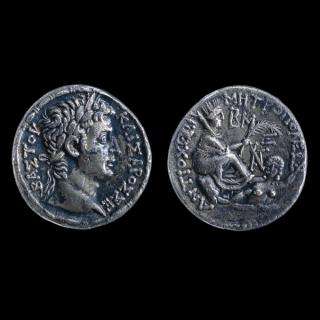Archaeologists to establish true value of Roman silver coins

An archaeologist at the University of Liverpool is examining more than 1,000 Roman silver coins from museums around the world in order to establish their true economic value.
Dr Matthew Ponting, from the University’s School of Archaeology, Classics and Egyptology, is investigating the chemical composition of the coins to further understanding of how and where they were made. Dr Ponting believes that analysis of the coins will also shed more light on the political and economic issues of the Roman Empire.
Dr Ponting and his colleague Professor Kevin Butcher from the American University of Beirut, are using unique analysis techniques to examine the make-up of the coins and establish their silver content. The analysis will also identify particular chemical elements which will help the archaeologists establish where and how the coins were made.
Dr Ponting said: “For the first time we are able to use a combination of chemical and isotopic analysis on these coins. Chemical analysis will give useful trace element ‘finger prints’ telling us about the type of ores exploited and the technology used in smelting and refining the metal.”
The team is analysing the coins by drilling a small hole in their outer edge to get beneath the treated surface and investigate their different layers.
Dr Ponting added: “By measuring the isotopes of lead in the coins it is often possible to ascertain where that metal came from. This is done by comparing the isotopic 'signature’ of the silver coin, with isotopic ‘signatures’ of known Roman silver mining regions. In this way I hope to be able to investigate where Rome was getting its silver from.”
Silver coins formed the backbone of currency in the Roman Empire. Roman emperors manipulated the silver content of the coins to solve short-term financial problems frequently caused by government overspending. For the most part, this manipulation involved the reduction of the silver content of the coinage in conjunction with a drop in weight.
Dr Ponting said: “In the 1970s a study documented the silver contents of Roman Imperial silver coins by analysing their surface. Until recently this was the principal reference for economic historians on the monetary policies of the Roman Empire.
“During the 1990s, however, historians realised that many Roman silver coins were deliberately treated to remove some of the copper from their surface, giving impure coins the appearance of being pure and disguising the debasement of the currency. Analysis of the coins’ surface had therefore overestimated their silver content.”
Source: University of Liverpool



















